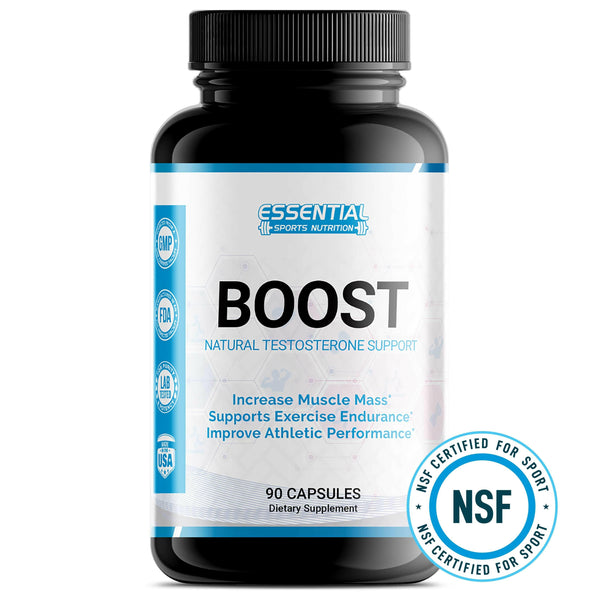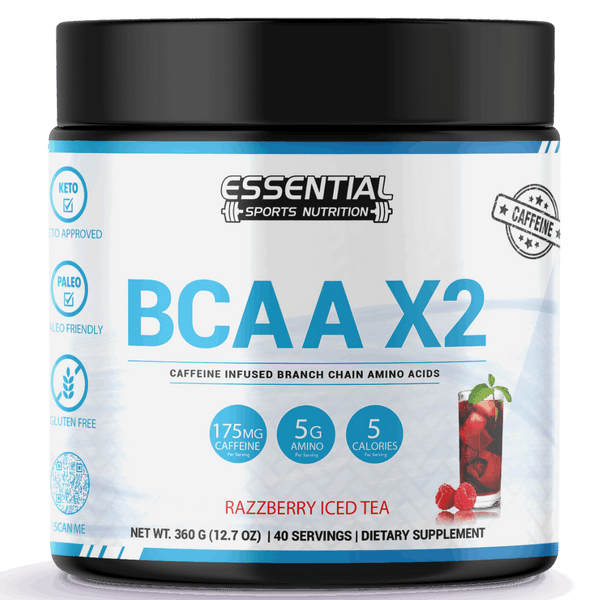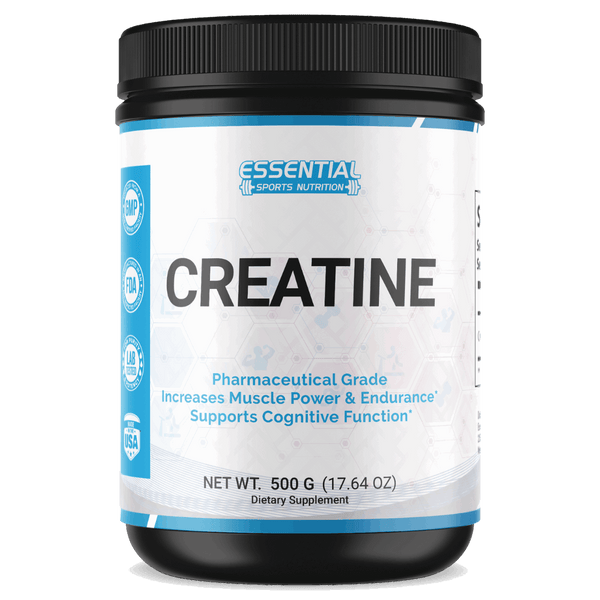Kettlebell Swing Secrets: Avoid These Common Mistakes for Max Gains
To enhance your kettlebell swings, focus on perfecting the hip hinge rather than squatting and guarantee full hip extension for power. Keep your arms relaxed, straight, and connected to your body movements; think of them as ropes swinging from your hips. Start with a lighter weight to prioritize form over mass and avoid the common mistake of overloading too soon. Remember, proper form is key: chest up, shoulders back, and core engaged. Breathing plays an important role, too—exhale on the swing up, inhale on the downswing. As you gain confidence and strength, explore variations like the two-hand and single-arm swings to challenge different muscles. There's more to master, and you're well on your way!

Key Takeaways
Avoid squatting during swings; focus on the hip hinge for proper form and muscle engagement.
Ensure full hip extension at the top of each swing for maximum effectiveness.
Keep arms relaxed and straight, acting as extensions of the hips to avoid unnecessary strain.
Choose a kettlebell weight that allows mastery of form before progressing to heavier weights.
Explore variations like Two-Hand Swings for strength and Single-Arm Swings for core stability, maintaining good form throughout.
Identifying Common Mistakes
When performing kettlebell swings, it's crucial to avoid common mistakes that can hinder your progress and increase the risk of injury. One key error is squatting instead of performing a proper hip hinge. This shift in technique causes you to use your knees excessively, undermining the effectiveness of the exercise. Always focus on pushing your hips back, not just bending your knees.
Another frequent misstep is incomplete hip extension. If you don't follow through with your hips, you're cutting the movement short and not fully engaging your glutes and hamstrings. This limits the power and effectiveness of your kettlebell swing. Make sure to thrust your hips forward fully to maximize the exercise's potential.
Additionally, watch out for an arm-body disconnect. This timing issue between your arms and hips can lead to a less powerful swing. Your arms should not be doing the heavy lifting; that's your hips' job. Ensure that your arms merely guide the kettlebell while your hips do the work.
Lastly, be cautious not to load your spine during the downward phase. This common mistake can strain your lower back. Maintain core stability and let your hips bear the brunt of the movement to protect your back and enhance results.
Mastering the Hip Hinge

To master kettlebell swings, you'll need to perfect the hip hinge, making sure your hips, not your knees, drive the movement. This technique is about powerfully flexing at the hips while keeping your spine neutral. Begin by slightly bending your knees, then push your hips back as if reaching for a chair behind you. You should feel tension building in your hamstrings and glutes, not your lower back.
Maintain correct shoulder positioning throughout the movement; keep your shoulders pulled back and down. This alignment helps stabilize your upper body and prevents back rounding, which can lead to injury. As you grip the kettlebell, ensure your chest is up and out, enhancing your ability to power through with your hips.
Now, explosively drive your hips forward. This isn't just standing up; it's a powerful thrust that engages your glutes at the movement's top. Imagine propelling the kettlebell with your hips alone, which maximizes the effectiveness of the swing and minimizes strain on other areas. Mastering this hip hinge is important for powerful swings and protecting your back and ensuring every rep counts. Keep practicing, and you'll see significant improvements in your form and strength.
Correct Arm Positioning
Keeping your arms relaxed and straight while gripping the kettlebell handle is crucial for effective kettlebell swings. It's not just about holding on; it's about establishing a seamless connection between the kettlebell and your body's powerhouse—your hips and core muscles. Don't fall into the trap of bending your elbows or using your shoulders to lift the weight. Instead, let your arms be the bridge that transfers the explosive power from your hip extension directly to the kettlebell.
Focus on maintaining this straight-arm position throughout the entire swing. This consistency guarantees that you harness the momentum your hip and core muscles generate, keeping your arms as passive participants rather than the primary movers. Remember, if your arms start to bend or lift, you're likely shifting the workload away from your core, leading to less effective swings and increased risk of injury.
Stay motivated by visualizing your arms as ropes—strong yet flexible, merely linking the dynamic energy from your core to the kettlebell. Each swing is a chance to perfect this form, enhancing your strength and efficiency. Keep pushing, and let the power of your hips drive each kettlebell swing, maximizing the workout for your core muscles.
Appropriate Kettlebell Weight

Selecting the right kettlebell weight is crucial; it should challenge you but still allow for proper form and technique throughout your swings. Starting with a lighter weight not only helps you master the basic movement but also guarantees that you maintain proper form as you progress. As you build strength and confidence, gradually increasing the kettlebell weight will keep your workouts effective and engaging.
Here are key points to remember when choosing your kettlebell:
Start Light: Begin with a weight that enables you to perform the swing with ease and precision.
Progress Gradually: Increase the weight only after you can perform multiple reps with perfect form.
Challenge Yourself: Choose a weight that makes the last two reps of your set challenging but doable.
It's important not to rush into heavier weights too quickly, as this can lead to injury and hinder your progress. Listen to your body and adjust the weight accordingly. Remember, the goal is to enhance your strength and fitness without compromising on technique. Keep pushing yourself, but always prioritize maintaining proper form with every swing to get the most out of your kettlebell workouts.
Breathing Techniques
When you're swinging that kettlebell, your breath control is as vital as your grip. Ensure you exhale sharply when the kettlebell reaches its peak to maximize core engagement and stability. By syncing your inhalation with the downswing, you'll maintain a rhythmic breathing pattern that boosts your performance and prevents fatigue.
Proper Inhalation and Exhalation
Mastering the art of breathing during kettlebell swings, where you inhale as the bell descends and exhale forcefully on the ascent, enhances your core stability and maximizes power output. This breathing technique not only keeps you steady but also greatly boosts the effectiveness of each swing. Remember, your breath is your power!
Stabilize Your Core: Inhale deeply to prepare your core for the load, maintaining intra-abdominal pressure.
Maximize Power: Exhale forcefully as you drive the kettlebell upward, harnessing your full strength in the movement.
Enhance Endurance: Consistent breathing patterns regulate your heart rate, allowing you to perform longer without fatigue.
Keep these tips in mind to optimize your kettlebell swings and see remarkable improvements in your performance!
Timing Breath With Movement
Building on your understanding of basic breathing during kettlebell swings, let's focus on how to time your breath with each movement to enhance your performance further. Inhale deeply through your nose as the kettlebell swings back between your legs, filling your lungs and engaging your core. This prepares you for the upward phase and boosts your core stability. As you drive the kettlebell up, exhale forcefully through your mouth, using your breath to power the swing. This technique maximizes your power output and guarantees your movements are sharp and controlled. Remember, syncing your breath with your swing is essential; it keeps your form tight and your energy-optimized. Keep practicing this rhythm to see significant improvements in your swings.
Breath Control Benefits
Harnessing the power of breath control in your kettlebell swings stabilizes your core and greatly boosts your overall power output. By mastering the timing and technique of your breathing, you guarantee that every swing is as powerful as it can be.
Here's how to optimize your breath control:
Inhale Deeply: Draw air through your nose during the backswing to fully engage your diaphragm and brace your core.
Exhale Forcefully: As you reach the top of the swing, exhale through pursed lips, creating a hiss to maintain core tension.
Consistency is Key: Maintain this breathing pattern throughout to enhance performance and minimize injury risk.
Remember these points, and you'll see a significant improvement in your kettlebell swings.
Swing Height and Speed

When you're perfecting your kettlebell swings, it's essential to focus on the swing height; aim to keep the kettlebell at shoulder level to maintain form and prevent shoulder strain. Adjusting your swing speed is equally important; a steady, controlled pace guarantees you're engaging the right muscles and minimizes the risk of injury. Remember, consistency in your swing's height and speed enhances your strength and guarantees you're performing this powerful exercise safely and effectively.
Optimal Swing Height
Aim to swing the kettlebell between hip and shoulder height to effectively engage your posterior chain, maintaining a controlled speed for best power and muscle activation. Striking the right balance in swing height activates the necessary muscles and maximizes your workout efficiency. Remember, consistency is key to reaping the full benefits of your efforts.
Consistent Height: Keeps the focus on the posterior chain, enhancing muscle activation.
Avoid Over-Swinging: Swinging too high can lead to shoulder and lower back strain.
Controlled Movement: Aims for efficiency in energy transfer and power generation.
Stay focused, keep pushing, and let each swing bring you closer to your strength goals.
Adjusting Swing Speed
As you adjust the speed of your kettlebell swings, remember that maintaining control is important to prevent injury and maximize the workout's effectiveness. Keep the swing height consistent, allowing the kettlebell to reach only as high as your chest, not above the shoulders. This guarantees good form and protects your back and shoulders from strain. When increasing the swing speed, focus on powering the movement from your hips, engaging your core and glutes effectively. This hip drive is vital for a powerful and safe swing. If you're aiming to boost your cardiovascular fitness, gradually increase the speed while monitoring your ability to maintain form. Slower swings are beneficial too, enhancing strength without compromising on safety.
Kettlebell Swing Variations

Let's explore the various kettlebell swing variations, each uniquely designed to enhance different muscle groups and improve your overall fitness. Incorporating these variations will spice up your routine and achieve a more balanced physique.
Two-Hand Swings: The classic choice for boosting power and strength, emphasizing your lower back, hips, and legs.
Single-Arm Swings: This variant challenges your core stability and engages the obliques more intensively, enhancing your core strength and muscular balance.
American Swings: Extend the kettlebell all the way overhead to work your upper body, particularly your shoulders and arms, making it a thorough upper-body workout.
When focusing on kettlebell swing variations, it's essential to understand that each targets a specific muscle group. The American swing, for instance, will greatly improve your upper body strength, incorporating a significant engagement of your deltoids and trapezius muscles. Always maintain proper form to maximize benefits and minimize the risk of injury. Stay motivated by tracking your progress and challenging yourself to gradually increase the weight or volume of your swings. Let's swing into action and transform your fitness journey!
Conclusion

Now that you've explored the nuances of kettlebell swings, remember to avoid common pitfalls and focus on your form. Hinge deeply, keep your arms straight, and choose a weight that challenges yet doesn't overwhelm you. Breathe rhythmically as you swing, controlling both the height and speed. Experiment with variations to keep your routine fresh and engaging. Stay dedicated, refine your technique, and watch as your strength and endurance transform—swing by swing. You've got this!
Kettlebell Swing Form, Muscles Worked, and Common Mistakes FAQs
Q: What muscles work during kettlebell swings?
A: Kettlebell swings primarily target the hamstrings, glutes, and lower back. They also engage the core, shoulders, and forearms to maintain stability throughout the movement.
Q: What is the proper form for kettlebell swings?
A: The proper form for kettlebell swings involves hinging at the hips, keeping a straight back, swinging the bell between your legs, and thrusting the hips forward to propel the kettlebell upward using the momentum generated by the hips.
Q: What are the benefits of kettlebell swings?
A: Kettlebell swings offer a full-body workout, improve cardiovascular fitness, increase strength and power, enhance core stability, and help with fat loss. They are also a time-efficient exercise for building muscle and improving endurance.
Q: What are common mistakes to avoid when performing kettlebell swings?
A: Common mistakes to avoid include using a weight that is too heavy, rounding the back, relying on the arms instead of the hips for power, and not fully engaging the glutes at the top of the swing. It is important to maintain proper form to prevent injuries and maximize the effectiveness of the exercise.
Q: How should I hold the kettlebell during a kettlebell swing?
A: Hold the kettlebell with both hands, keeping a firm grip and ensuring that it hangs down between your legs at the starting position. Use your hip thrusts to guide the kettlebell's movement throughout the swing and maintain control of it.
Q: How can I improve my kettlebell swing technique?
A: To improve your kettlebell swing technique, focus on proper hip hinge mechanics, engage your core throughout the movement, and practice with lighter weights to perfect your form before progressing to heavier kettlebells. Seek guidance from a certified kettlebell instructor if needed.
Q: What are the variations of kettlebell swings that I can incorporate into my workouts?
A: Variations of kettlebell swings include single-arm swings, Russian kettlebell swings, double kettlebell swings, and single-arm high pulls. Each variation targets slightly different muscles and may provide a new challenge to your kettlebell training routine.
Q: How Can a Kettlebell Swing Be Performed Incorrectly?
A: You might be performing kettlebell swings wrong by squatting instead of hinging, not fully extending your hips, mistiming your arm and hip movements, loading your spine, or pulling with your arms at the top.
Q: How Do I Know if I'm Doing Kettlebell Swings Correctly?
A: To guarantee you're doing kettlebell swings correctly, check that your hips hinge properly and feel the tension in your hamstrings. Keep your shoulders down and chest up, and always engage your core throughout the movement.
Q: What Is the Best Technique for Performing Kettlebell Swings?
A: To master kettlebell swings, hinge at your hips, not squat. Drive powerfully through your hips, keep your chest up and shoulders back, and use your arms as extensions. Breathe out on extension.
Q: Will Kettlebell Swings Get Me Ripped?
A: Yes, if you're consistent, kettlebell swings can get you ripped, so pair them with a balanced diet. When performed regularly, they target multiple muscles, boost metabolism, and enhance muscle definition. Keep pushing!























